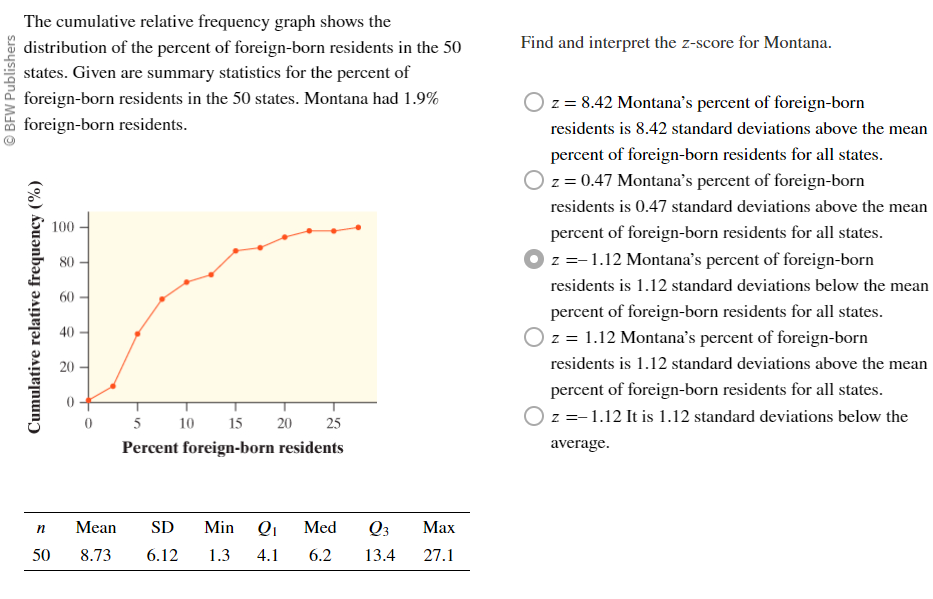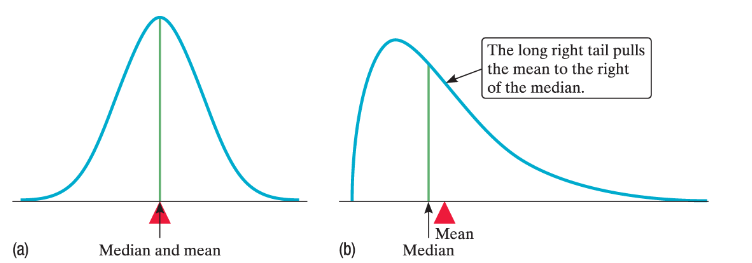Chapter 2: Modeling Distributions of Quantitative Data
2.1 Describing Location in a Distribution
- The pth percentile is the percent of values in a distribution that are less than or equal to the individual’s data value.
- Ex: 4 students of 25 earned a higher test score than Emily. 21/25 ppl have scores less than or equal to her, so she’s in the 84th percentile.
- Ex: The table reveals that 20.0% of U.S. presidents took office by the time they turned 50. In other words, the 20th percentile of the distribution of inauguration age is 50.000 years.
- A Cumulative Relative Frequency Graph plots a point corresponding to the cumulative relative frequency
- Make one by
- Useful to measure percentiles in a distribution
- The standardized score (z-score) tells us how many standard deviations a value is from the mean
- z = (value - mean) / (standard deviation)
- Values larger than mean have positive z-scores

- Transformations (a & b are constants):
- Neither transformations will change the shape.
- If data is being added/subtracted by a constant (a), all the values in a data set, measures of center and location—mean, five-number summary, percentiles—increase (decrease) by 𝑎
- Measures of variability—range, IQR, SD—do not change.
- When you multiply (divide) all the values in a data set by a positive constant 𝑏 everything changes: measures of center, location, and variability are multiplied (divided) by 𝑏.
- It’s possible to have multiple transformations of a and b in one distribution
2.2 Density Curves and Normal Distributions:
- Density Curves always add up to 1 or 100%
- Its basically a dot plot with a shit ton of calculus (area under the dot plot)
- If a density curve is symmetric both the mean and the median will lie at the same point of symmetry.
- If a curve is skewed, however, the mean is closer to tail, median is farther from tail

- Normal Density Curve is drawn over a histogram (calculus shit again)
- Shape: All Normal distributions have the same overall shape: symmetric, single-peaked (unimodal), and bell-shaped.
- Center: The mean μ is located at the midpoint of the symmetric density curve and is the same as the median.
- Variability: The standard deviation σ measures the variability (width) of a Normal distribution.

- The Empirical rule states that: 68% for [-1, 1] SD, 95% for [-2,2] SD, 99.7 for [-3,3] SD

- Reminder: You need to draw the normal graph & the scaled graph:

- Make sure to write N=(Mean, SD) for left graph, and N=(0,1) for right normalized graph
- To convert a percentile to a z score do backwards stuff:
- Look in the body of Table A for the value closest to 0.20. A 𝑧-score of –0.84 gives the closest value (0.2005).
- −0.84 = (x-5.3) / 0.9 → x = 4.544mins




